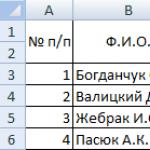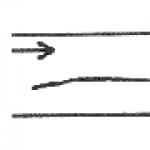Refractometer with Brix scale. Checking the granulated sugar. Refractometer. Operating instructions Refractometer operating instructions
The device is designed to work with alcohol and syrups related to winemaking. It measures the sugar content of grapes, which helps the producer choose the optimal time to produce grape wine.
|
Range |
Value of division |
Error |
|
|
0-40% Brix |
0.20% Brix |
±0.2% Brix |
|
|
RHW-25/Baume/ATC |
|||
|
±1% wt. |
Notes:
1) If this a new version model, the letter N is added to its name, for example: RHWN-25ATC, etc.
2) Automatic temperature compensation (ATC) range: 10°C to 30°C
3) Models RHW-25/ATC and RHW-25/Baume/ATC are commonly used to determine the alcohol strength of grape wine made from natural grape juice.
Components:
Newly designed components
1----Light plate; 2----Calibration screw; 3----Focus adjustment; 4----Peephole; 5----Gauge screw lock
Operating procedure:
1) Point the front edge of the refractometer at a bright light source and adjust the eye so that the crosshair of the sight is clearly visible.
2) Calibration.
Open the light plate and drop 2-3 drops of distilled water onto the main prism. Close the light plate and press it lightly so that the water is distributed over the entire surface of the prism without forming bubbles or dry areas. Let the sample sit on the prism for about 30 seconds. Now adjust the calibration screw so that the boundary of the dark and light areas falls exactly on the zero line.
A refractometer with a temperature compensation function should be adjusted at a temperature environment 20°C.
If the operating temperature in the room or measurement location (but not the sample) has changed by more than 3 °C, it is recommended to recalibrate to improve measurement accuracy.
3) The operating procedure is carried out after calibration in the same sequence as calibration. Open the light plate. Wipe the surface of the prism with a soft cotton cloth. Place 2-3 drops of the test solution onto the main prism. Close the light plate and press it lightly, then you can read the scale at the border of the light and dark areas. The readings correspond to the value related to the solution.
4) After measuring, wipe off all the solution from the surface of the prism and light plate with a damp cotton cloth. After drying, the plate must be pressed well again.
Maintenance warnings.
1) Zero setting. The liquid and sample must be at the same temperature. If the temperature varies greatly, the zero point should be reset every 30 minutes.
2) After use, never wash the device with water to prevent water from getting inside the device.
3) Since the device is a precision optical instrument, it should be handled and maintained with care. Never touch or scratch optical surfaces. The device should be stored in a dry, clean place, away from sources of corrosion, and the surface should be protected from fog and mold. When transporting, avoid sudden shocks.
4) If you use the tool in accordance with the specified methods, then it is guaranteed to never become unusable. The optical properties of the device do not change over time.
Temperature correction
The base temperature of the device is 20°C. During operation, temperature compensation should be carried out according to the table. Models marked ATC are equipped with automatic temperature compensation. Therefore, temperature correction according to the table is not required for them.
What is a refractometer?
A refractometer is an optical instrument that measures the refractive index of light in a medium. Refractometry, performed using refractometers, is one of the most common methods for identifying chemical compounds, quantitative and structural analysis, determination of physical and chemical parameters of substances.
The operation of a refractometer is based on measuring the refractive indices of light in various media. If the density of a substance increases, its refractive index increases proportionally (for example, when sugar is dissolved in water). A refractometer reads the relative "weight" of a sample compared to distilled water.
Refractometer Calibration and Use
Wait approximately 30 seconds before you proceed to the next step. This will allow the sample to adapt to the ambient temperature.
Point the refractometer towards natural daylight and look through the eyepiece. You will see a circular area (box) centered at the bottom. (Figure 1 shows the scale without calibration fluid or any other fluid.) |
 |
Tighten the calibration screw until the boundary between the upper blue area and the lower white area meet exactly at the zero mark. |
 |
Figure 3 illustrates what you see at this stage.
 |
Picture 1 This drawing illustrates what you can see in the eyepiece without any reference. Notice that the entire scale is colored blue. When viewing, make sure you use natural daylight. You should not take readings in the presence of fluorescent light. |
 |
Figure 2 This is what you see after the refractometer has been calibrated. Please note that for proper calibration, the border of the blue and white scale should be exactly at the zero mark when using distilled water as a sample. |
 |
Figure 3 This example shows a scale for measuring grape juice. You can see that the meter shows 23% Brix, the best time to make wine! After finishing the measurement, make sure you clean and dry the refractometer. |
Refractometer maintenance
Accurate measurement depends on careful and correct calibration. As a reminder, differences between ambient temperature and sample temperature will reduce the accuracy of the reading. Be sure to wait approximately 30 seconds before taking a reading.
Do not immerse the instrument in water or allow water to get inside.
Do not measure harsh or corrosive chemicals with this instrument because they may damage the prism coating.
Clean the instrument between each measurement using a soft cloth.
A refractometer is an optical instrument. It requires careful handling and storage. With careful use and proper storage, this tool will provide reliable performance for many years.
The air temperature during calibration should be 20° C. However, many modern models come with ATC (automatic temperature compensation), so you don't have to worry about calibration air temperature or sample temperature.
Sources: www.grapestompers.com, www.patech.ru
Manual
Refractometer RSG-100-ATC
Notes: 1) If this is a new version of the model, the letter N is added to its name, for example: RSG N-100-ATC, etc.
2) Automatic temperature compensation (ATC) range: 10°C to 30°C
Components:
Newly designed components
1----Light plate; 2----Calibration screw; 3----Focus adjustment; 4----Peephole; 5----Gauge screw lock
Operating procedure:
1) Point the front edge of the refractometer at a bright light source and adjust the eye so that the crosshair of the sight is clearly visible.
2) Zero setting.
Open the light plate and drop 2-3 drops of distilled water onto the main prism. Close the light plate and press it lightly so that the water is distributed over the entire surface of the prism without forming bubbles or dry areas. Let the sample sit on the prism for about 30 seconds. Now adjust calibration screw so that the border of the dark and light areas falls exactly on the zero line. A refractometer with temperature compensation should be set up at an ambient temperature of 20°C. If the operating temperature in the room or measurement location (but not the sample) has changed by more than 3 °C, it is recommended to recalibrate to improve measurement accuracy.
3) The operating procedure is carried out after calibration in the same way as calibration. Open the light plate. Wipe the surface of the prism with a soft cotton cloth. Place 2-3 drops of the test solution onto the main prism. Close the light plate and press it lightly, then you can read the scale at the border of the light and dark areas. The readings correspond to the value related to the solution.
4) After measuring, wipe off all the solution from the surface of the prism and light plate with a damp cotton cloth. After drying, the plate must be pressed well again.
Maintenance warnings.
1) Zero setting. The liquid and sample must be at the same temperature. If the temperature varies greatly, the zero point should be reset every 30 minutes.
2) After use, never wash the device with water to prevent water from getting inside the device.
3) Since the device is a precision optical instrument, it should be handled and maintained with care. Never touch or scratch optical surfaces. The device should be stored in a dry, clean place, away from sources of corrosion, and the surface should be protected from fog and mold. When transporting, avoid sudden shocks.
4) If you use the tool in accordance with the specified methods, then it is guaranteed to never become unusable. The optical properties of the device do not change over time.
Temperature correction
The base temperature of the device is 20°C. During operation, temperature compensation should be carried out according to the table. Models marked ATC are equipped with automatic temperature compensation. Therefore, temperature correction according to the table is not required for them.
HOW TO TAKE READINGS:
- RUB 2,690
Are available
Add to cart Compare
Postpone
Delivery in Moscow
Delivery 1-2 days
Delivery amount is calculated individually
- Payment online
Bank cards - From the Mir card you can pay a maximum of 5,000 at a time and 15,000 per month. From a Visa, MasterCard or Maestro card - a maximum of 250,000 at a time, per month - 500,000 rubles.
Electronic money
Yandex Money: at one time you can pay from an identified wallet - up to 250,000, from an anonymous wallet - up to 15,000.
How does the return work?- We send the payment order to the bank where the current account of our organization is opened.
- The bank transfers the required amount to our personal account for refunds in Yandex.Checkout. - Yandex Cashier debits money from your personal account and returns it to you bank card
or to your wallet - depends on how you paid.
- Payment upon pickup
- Possible after receiving confirmation of the availability of the goods you ordered in the store.
- Payment for an order with the selected delivery method “Pickup of the order” is made in cash at the cash desk of our store.
Delivery
Delivery methods in Moscow and the Moscow region
Standard delivery by courier in Moscow within the Moscow Ring Road:
- Delivery of goods worth less than RUB 3,000. - 400 rubles.
- Delivery of goods costing from 3,000 - 5,000 rubles. - 300 rubles .
- Delivery of goods: total cost of more than 5,000 rubles. - FOR FREE .
Same-day delivery in Moscow within the Moscow Ring Road costs from 600 rubles, depending on the size and weight of the order.
Standard courier delivery in the Moscow region:
- Delivery within the Moscow region up to 5 km. from MKAD – 600 rub.
- Delivery within the Moscow region from 5 km. up to 10 km. from MKAD – 700 rub.
- Delivery within the Moscow region from 10 km. up to 20 km. from MKAD – 800 rub.
- Delivery within the Moscow region from 20 km. up to 30 km. from MKAD – 900 rub.
- Delivery within the Moscow region from 30 km. up to 40 km. from MKAD – 1100 rub.
- Delivery within the Moscow region from 40 km. up to 50 km. from MKAD – 1200 rub.
- Delivery in the Moscow region from 50 km from the Moscow Ring Road - 1200 rub. + 25 rub. per kilometer.
Pickup from retail stores website
After placing an order, a ShopBarn manager will contact you to confirm the availability of all ordered items and agree on a pickup date for the order. Order processing takes place in work time store, order assembly takes from several hours to several days, depending on the availability of ordered items in the warehouse of the pickup store. After agreeing on the order, the order is placed on reserve for 3 days.
Refractometer RSG-100/ATC (0-32) allows you to measure the density (amount of sugar) of your beer or mash using just 1 drop.
A refractometer is an optical instrument designed to measure the concentration of sugars in aqueous solutions. Concentration is measured by measuring the degree of refraction (refraction) of light in a solution.
Refractometers, most commonly used by homebrewers, do not contain any electronic components.
Using a refractometer is very simple.
First you need to calibrate it: place a drop of distilled water on the glass, close the lid and wait 30 seconds.
Point the refractometer at the light source and look through the eyepiece: measurements are taken using the dividing line between the blue field and the light field (you will immediately understand everything, as soon as you look). This line indicates the degree Brix scale, which you also see in the eyepiece.
Using a calibration screwdriver, ensure that the refractometer shows 0 Brix on distilled water. After calibration, clean the glass, drip wort onto it and read the readings.
HOW TO TAKE READINGS:
Initial gravity is measured very simply, you simply drop a drop of wort onto the refractometer before putting it into fermentation and determine it to BRIX gravity. Final gravity is a little more complicated. When the liquid already contains alcohol, the refractometer gives distorted readings, but there is a special calculator that allows you to determine the exact figures for the final gravity of your beer. It also helps to calculate the final alcohol content.
http://www.northernbrewer.com/refractometer-calculator/
In the first point, from above, recalculate Brix to S.G.
It is not necessary to use it since this refractometer model shows both indicators at once.
Enter the initial and final density in Brix, and the program calculates the actual final density in S.G.
In the last paragraph: Approximate ABV and Original Gravity from current Brix and Gravity converter.
Enter the final density in Brix (what the refractometer shows you), the final S.G - what you calculated in the point above. At the output you get the strength and, to check, the initial gravity in S.G.
In stock
The multifunctional portable refractometer WZ-116 (RHB-90ATC) differs from similar devices in its ability to measure not only in Brix units in the range of 58-90% and a resolution of 0.5%. But also in Baume units in the range of 38-43 Be" and a resolution of 0.5 Be", and also determine the water content, for example in the fruit part, in the range of 10-33% and a resolution of 1%. Such characteristics of the WZ-116 (RHB-90ATC) model determined its wide distribution in Food Industry to assess the concentration of sugar and other indicators in different liquids. The scale of the WZ-116 (RHB-90ATC) refractometer displays light reflected from the interface of the prism and the sample, the refractive index of which depends on the value of the measured parameter, such as sugar concentration or water content. Dimensions..
Add to cart
In stock
The unique model of the refractometer WZ-109 (RHB-92) is designed to measure sugar levels in foods with high concentrations in the range of 58-92% Brix. A a high resolution 0.5% Brix and ±0.5%Brix accuracy provide control in processes where even the smallest deviations in sugar levels matter. The Brix unit of measurement has been specially developed for the purpose of determining the sugar concentration in juices, drinks and juices and has been internationally certified. This unit of measurement, recorded on the scale of the WZ-109 (RHB-92) refractometer, is a derivative of the refractive index of light at the boundary of the test sample. We know from experience that if, for example, a pencil is placed in a glass of liquid, it will appear broken, and the more so, the higher the refractive index of the liquid.
Add to cart
In stock
Refractometer WZ-711 (RHBS-32ATC) measures the refractive index of a sample, which can be used to determine chemical composition complex substance and the ratio of simple substances contained in it, for example, sugar. This measurement is carried out due to beam deflections depending on the composition. Therefore, part of the light is reflected at a certain angle onto the built-in scale, marked according to international agreements. The scale is marked using special tables and formulas that are easy to understand ordinary consumer and can be easily implemented in Excel format. The WZ-711 Refractometer (RHBS-32ATC) provides simple and fast measurement of sugar concentration in Oechsle units in the range of 0-140°Oe and KMW units in the range of 0-27°Babo. Measurement accuracy ±0.2%..
Add to cart
In stock
The WZ-511 (RHW-80ATC) refractometer is used in the production of alcoholic beverages, including beer and wine. Device with high accuracy determines the refractive index of light at the boundary of the liquid being tested. And since it directly depends on the composition of the liquid, in particular the percentage of alcohol, you can find out everything you need by converting the measured coefficient into required indicator through special formulas and correspondence tables. So it is quite possible to calculate the initial density of already fermented beer or the alcohol content in it. Or determine the density value during filtration and boiling of the wort. For example, you have a bottle of beer and you need to find out its initial density. We take the WZ-511 (RHW-80ATC) refractometer, take readings and substitute it into the required formula. For this you can...
Add to cart
In stock
Refractometer model WZ-115 (RHB-82ATC) is used in the food industry to evaluate the sugar concentration in various liquids, such as juices and drinks. The design of the device is based on modern advances in physics and is very simple - a sample of liquid is placed between two transparent plates, after which, through the eyepiece in the light, a division into dark and light parts is visible on the scale. The boundary of this division shows on a scale the value of sugar concentration in international Brix units. If it is necessary to convert the refractive index to measure other indicators, there are special formulas. The scale built into the WZ-115 (RHB-82ATC) refractometer is designed for the range of 45-82% Brix, has a resolution of 0.5% Brix and an accuracy of ±0.5%. Device dimensions 140 mm by 40 mm by 3..
Add to cart
In stock
Refractometer WZ-114 (RHB-62ATC) is designed to work with sugar-containing liquids in the most common range of 28-62% Brix. This, combined with a resolution of 0.2% Brix and an accuracy of ±0.2% Brix, ensured widespread adoption of the device. Model WZ-114 (RHB-62ATC) is extremely easy to set up and use. Simply drop a little liquid onto the glass, press it with another glass, wait thirty seconds to equalize the temperature of the liquid and the instrument, and you can read the readings through the eyepiece. The scale built into the device is marked in Brix units approved by international standards, indicating the concentration of sugar. However, if there is a need for other units of measurement, detailed conversion tables and special formulas are available. Refractometer WZ-114 (RH..
Add to cart
In stock
The WZ-514 (RHW-25aATC) refractometer accurately determines the refractive index of light at the boundary of the liquid being tested and converts it into a percentage of alcohol in the range of 0-25% or into Baume units established by international standards in the range of 0-20Be." The device is widely used in brewing and winemaking and provides the determination of indicators necessary in production, for example, the initial density of the liquid or the concentration of the wort. For this, you can use correspondence tables and special formulas that are quite simple and do not require a higher mathematical education for their use. Direct display on the WZ-refractometer scale. 514 (RHW-25aATC) alcohol concentration with a resolution of 0.2% and an accuracy of ±0.2%, as well as Baume units with an accuracy of ±0.2B..
Add to cart
In stock
The WZ-715 (RHBS-44ATC) refractometer uses the following scales: Oechsle (Oe°), Brix (%Sucrose) and KMW (Bavo). Thus, measurements of the level of grape juice are carried out in units of Oe° (degrees Ochsle in Germany) and KMW (degrees Wavo in Austria), which are related as follows: Oe = KMW * 5. And the measurement of sugar concentration is performed in Brix units. These units of measurement were obtained as a result of many years of research and approved by international standards. Refractometer WZ-715 (RHBS-44ATC) measures the refractive index in a sample, which makes it possible to determine the chemical composition of a complex substance and the ratio of simple substances contained in it. Therefore, part of the light is reflected at a certain angle onto the built-in scale. The unique refractometer WZ-715 (RHBS-44ATC) provides simple and...
Add to cart
In stock
The portable model of the refractometer WZ-211 (RHS-10ATC) is used to determine the salt concentration in solutions and brines using the refractive index. This coefficient characterizes the degree of refraction of light at the interface with the sample, depending on the concentration of certain substances, for example, salt. The device is understandable even to a non-professional, since a few drops of sample between two transparent plastics are enough and the concentration level in parts per thousand and specific gravity will be visible through the eyepiece. It is used in medical, research and educational laboratories, in production, in everyday life and in education. The measurement range of the WZ-211 (RHS-10ATC) refractometer for salt concentration is 0-100‰, resolution 1‰ and accuracy ±1‰. Specific gravity is determined in the range 1.00-1.07, scale step 0.001 ..
Add to cart
Pre-order
The RHA-303 refractometer is used to measure the refraction of light at the interface of a test liquid. When light passes through the prism and is reflected at the sample boundary, it hits the built-in scale, specially marked according to international standards. The markings are designed to directly read the density of the electrolyte in batteries and batteries and the freezing temperature of coolants. Model RHA-303 is used in the production of antifreeze, batteries, and batteries. Due to the simplicity of the device, it has become very popular not only among chemists, but also among mechanics in car services and auto repair shops, especially in the northernmost regions of Russia. The RHA-303 refractometer has an extended scale designed for a wider temperature range, capturing the most low temperatures far north. T..
Add to cart
Pre-order
Refractometer for coolants and electrolyte RHA-501. Freezing point measurement range of ethylene glycol -50 - 0°C (-60 - +32°F), propylene glycol -50 - 0°C (-50 - +32°F), electrolyte density 1.10-1.40 sg.
The unique model of the refractometer RHA-501 is intended for car enthusiasts of all countries, as it provides measurement of the freezing temperature of coolants in degrees Celsius and Fahrenheit. The device has also proven itself well among car owners and auto repair shop employees as a reliable and easy-to-use optical device. Model RHA-501 consists of a prism, a transparent pressure plate, a built-in scale, an eyepiece for reading the result and a calibration screw. The kit also includes a screwdriver for calibration and a suede cloth. The device's scale is specially marked to directly read the solidification levels of propylene glycol, ethylene glycol and cleaner, as well as electrolyte concentration. Refractometer RHA-501 provides temperature measurement at...
Add to cart
Pre-order
The RHB-55 refractometer is used to determine the refractive index and measure the sugar concentration in juices, wines and drinks. The coefficient expresses the refraction of light at the interface of the prism with the liquid and the result can be seen through a special eyepiece. Inside the device there is a special scale on which the sugar concentration is marked. There are also special tables and formulas for converting to other units of measurement for calculating other indicators. Sugar concentration is measured by the RHB-55 refractometer in Brix units, which is why the device is also called a “Brix meter”. The measurement occurs in the range of 0-55% Brix, with a resolution of 1% Brix and an accuracy of ±1% Brix. Such a wide range and large scale pitch of the device make the RHB-55 model most suitable for specific applications..
Add to cart
Pre-order
Refractometer WZ-101 (RHB-10) is an easy-to-use, ergonomic device for determining the sugar concentration in foods and drinks. Working part The device consists of two glasses, onto one of which a liquid sample is dropped and illuminated with natural light. Passing through a prism, a beam of light is deflected at the border of the sample in accordance with the level of sugar in it. The brix meter is similar in design to any other refractometer, but has a specially calibrated scale. It is possible to additionally use special tables and formulas with the WZ-101 (RHB-10) refractometer to calculate some other required parameters in fruit juices, drinks and wines. Model WZ-101 (RHB-10) has a specially designed scale for measuring the concentration of sugar in food..
Add to cart
Modern industrial potential has reached unprecedented levels. Nowadays the quality of almost all manufactured goods is controlled in the world. To ensure the proper level of product quality, more and more new measuring instruments are created every year, which serve to accurately calculate certain relevant characteristics.
The ubiquitous measuring device
One of the most important and highly sought after modern instruments is the laboratory refractometer. His functional responsibility is to determine the composition of various substances and the presence of certain impurities in certain manufacturing materials.
Widely used in such industries as:
- food industry;
- chemical materials and components;
- applied engineering;
- petroleum products;
- production of various automated equipment, etc.
Wide range of applications
In addition to the above-mentioned industries, you can buy a refractometer in a huge list of other areas. This measuring device is extremely useful not only in conditions laboratory research, but also in small and medium-sized industries. The price of a stationary refractometer may vary depending on the model, the accuracy of the displayed data, and the availability of additional options.
High quality standard is the main policy of our store
Our specialized store of measuring instruments offers you a refractometer in Moscow at best prices. In addition to a pleasant pricing policy, we offer a wide selection of both the most popular models and the most rare and hard-to-find devices for general use.






